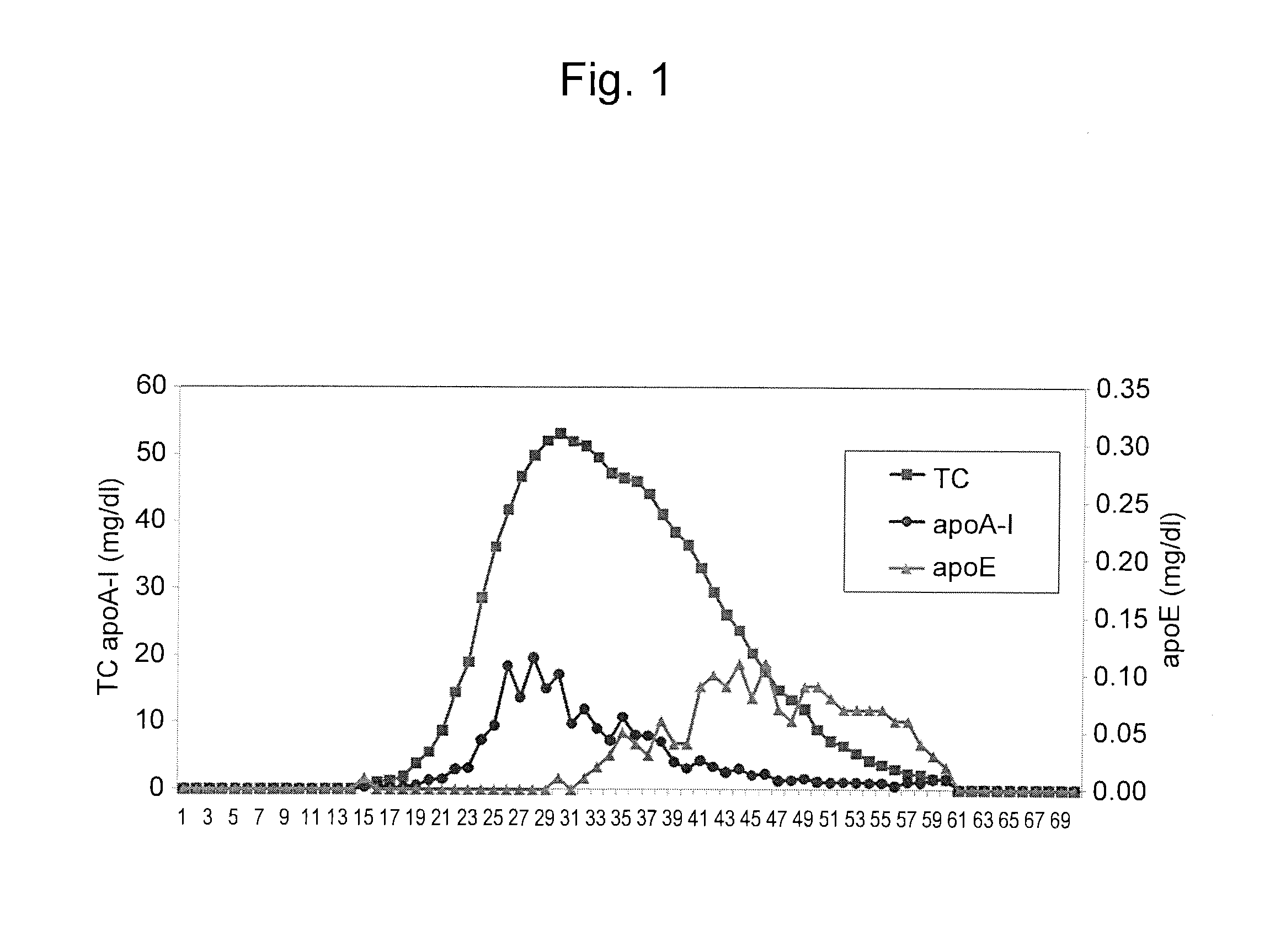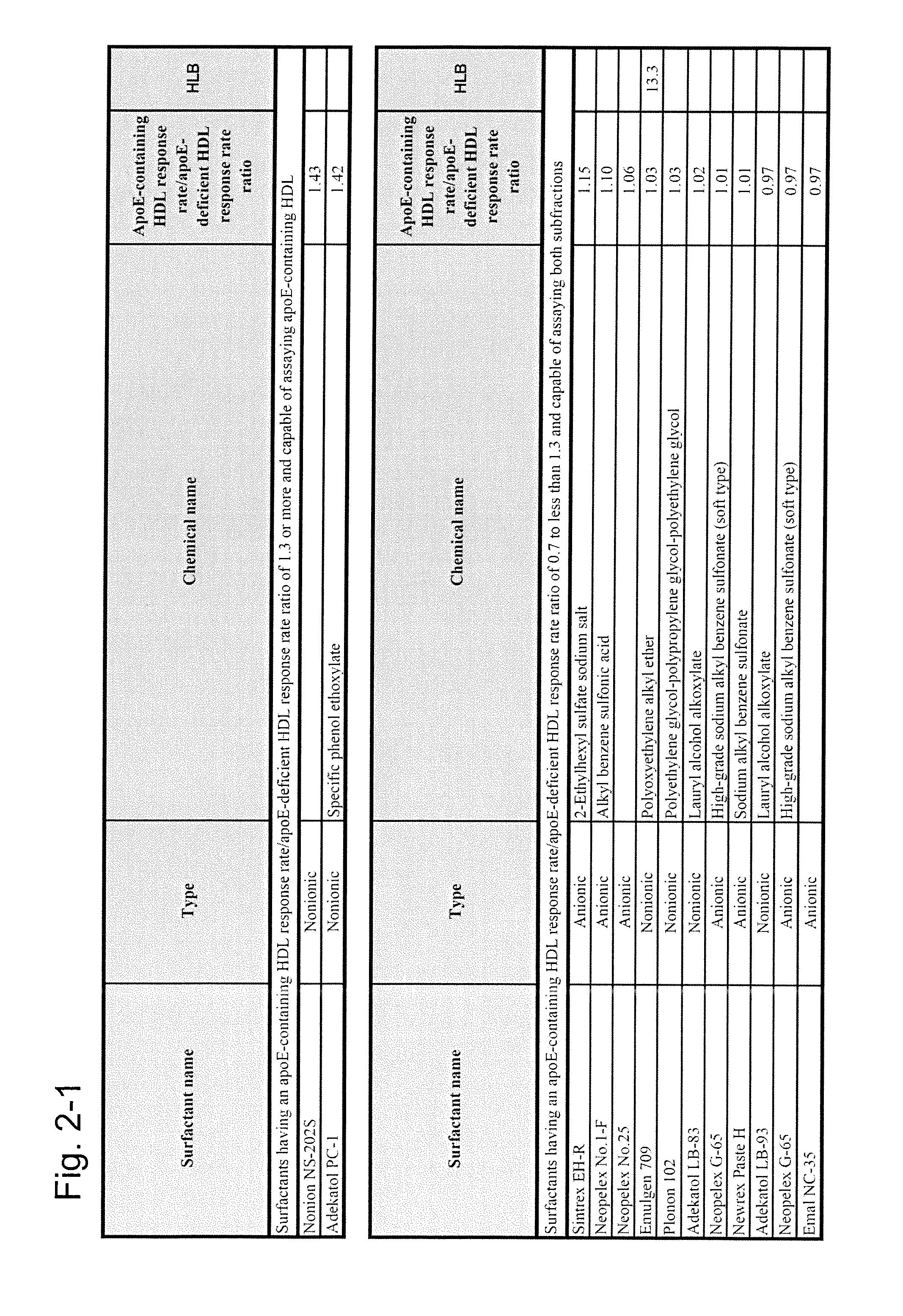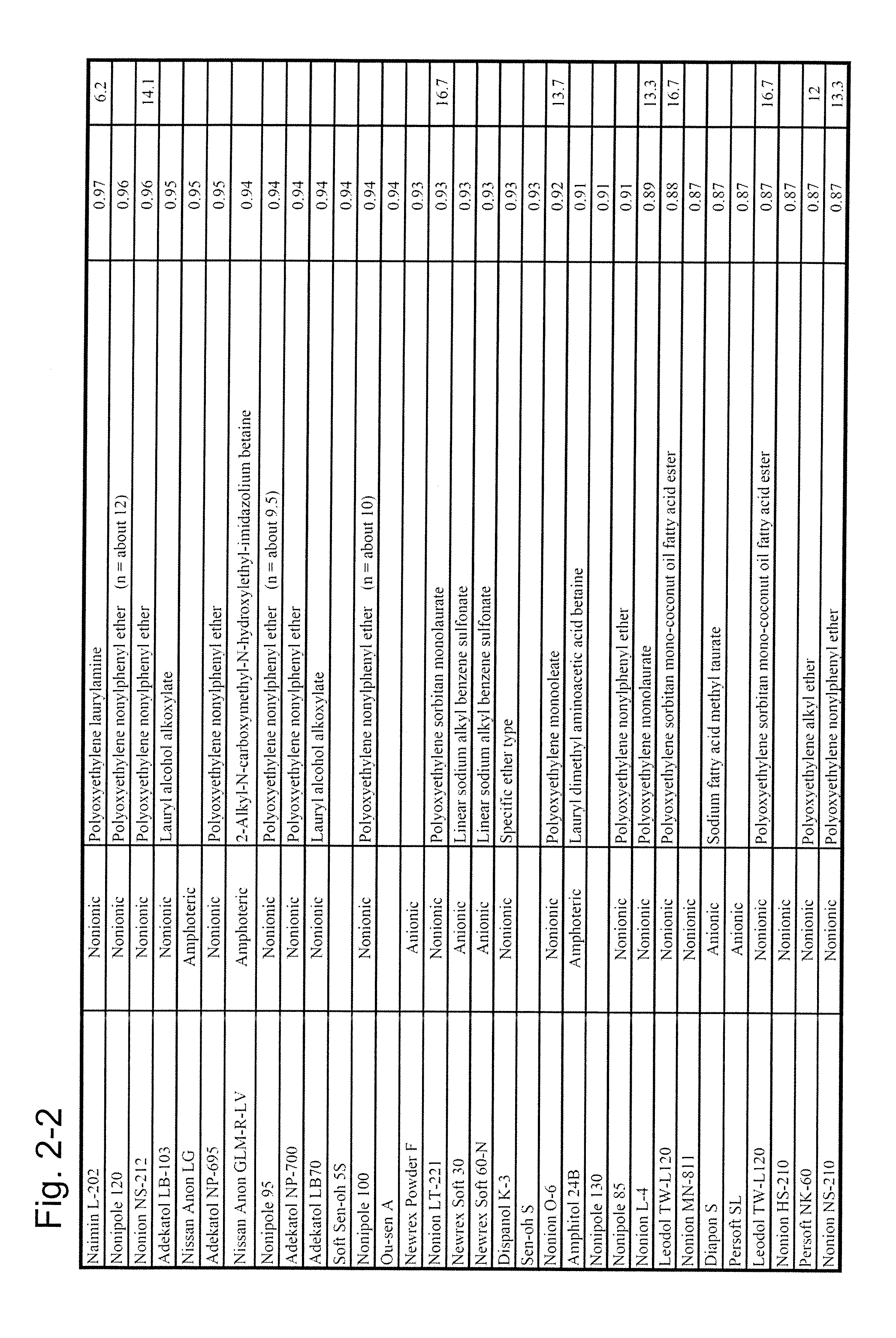METHOD FOR ASSAYING CHOLESTEROL IN ApoE-CONTAINING HDL
a technology of apoe-containing hdl and assaying cholesterol, which is applied in the direction of microbiological testing/measurement, biochemistry apparatus and processes, etc., can solve the problem that the method does not allow apoe-deficient hdl-c and apoe-containing hdl-c to be separately
- Summary
- Abstract
- Description
- Claims
- Application Information
AI Technical Summary
Benefits of technology
Problems solved by technology
Method used
Image
Examples
reference example 1
Fractionation of apoE-containing HDL and apoE-deficient HDL
[0084]The following procedure was carried out in order to recover apoE-containing HDL and apoE-deficient HDL fractions from the serum samples.
[0085]Potassium bromide (5.7687 g) was added to 18 ml of a serum sample obtained from a healthy volunteer to adjust the density (d) to 1.225, and the total lipoprotein was separated via ultracentrifugation at 65,000 rpm for 13 hours and 50 minutes. The resultant was subjected to dialysis with PBS (2 mmol / l, pH 7.4) and NaCl (30 mmol / l) for 24 hours, potassium bromide was removed, 2.0 ml of a 20% polyethylene glycol solution (average molecular weight: 6,000) was added to 2.0 ml of the test sample so as to coagulate lipoproteins other than HDL (e.g., CM, VLDL, and LDL), the coagulated fraction was trapped with a 0.25-μm filter, and HDL was then recovered. Thereafter, HDL was held on a heparin-fixed column, and HDL was divided into apoE-deficient HDL and apoE-containing HDL with the use o...
example 1
Reactivity of Various Surfactants with apoE-containing HDL and apoE-deficient HDL
[0087]In order to inspect the reactivity of various surfactants with apoE-containing HDL and apoE-deficient HDL subfractions, reagents having the compositions shown below were prepared. The second reagents were prepared using 100 types of surfactants.
First reagentsBES buffer (pH 7.0)100mmol / lHDAOS0.7mmol / lCholesterol esterase0.8U / mlCholesterol oxidase0.5U / mlCatalase80U / mlMagnesium chloride10mmol / lSecond reagentsBES buffer (pH 7.0)100mmol / l4-Aminoantipyrine4.0mmol / lPeroxidase2.4U / mlSodium azide0.1%Surfactant of different type1.0%
[0088]The first reagent (150 μl) was mixed with 2 μl of the test sample containing apoE-deficient HDL (fractions 25, 26, and 27) and apoE-containing HDL (fractions 44, 45, and 46) purified by the method of Reference Example 1, the resultant was allowed to react at 37° C. for 5 minutes (the first step), 50 pl of the second reagent was allowed to react therewith at 37° C. for 5 min...
example 2
Quantification of Cholesterol in HDL
[0091]A reagent was prepared using Dispanol K-3 instead of the surfactant used for the second reagent in Example 1. Fractions containing VLDL, LDL, and HDL fractionated via HPLC were selected as test samples, 150 pi of the first reagent was mixed with 2 μl of the test sample, the resultant was allowed to react at 37° C. for 5 minutes, the second reagent (50 μl) was allowed to react at 37° C. for 5 minutes, and the absorbance was assayed at 600 nm (primary wavelength) and 700 nm (secondary absorbance). The amount of cholesterol was determined based on the absorbance assayed, and the determined value was compared with that in the test sample. The results of comparison are shown in FIG. 3.
[0092]As shown in FIG. 3, a majority of the cholesterol in HDL can be quantified with the method described above, although no or substantially no cholesterol in other lipoproteins can be quantified. The method of the present invention allows selective quantification...
PUM
| Property | Measurement | Unit |
|---|---|---|
| diameters | aaaaa | aaaaa |
| diameters | aaaaa | aaaaa |
| diameters | aaaaa | aaaaa |
Abstract
Description
Claims
Application Information
 Login to View More
Login to View More - R&D
- Intellectual Property
- Life Sciences
- Materials
- Tech Scout
- Unparalleled Data Quality
- Higher Quality Content
- 60% Fewer Hallucinations
Browse by: Latest US Patents, China's latest patents, Technical Efficacy Thesaurus, Application Domain, Technology Topic, Popular Technical Reports.
© 2025 PatSnap. All rights reserved.Legal|Privacy policy|Modern Slavery Act Transparency Statement|Sitemap|About US| Contact US: help@patsnap.com



